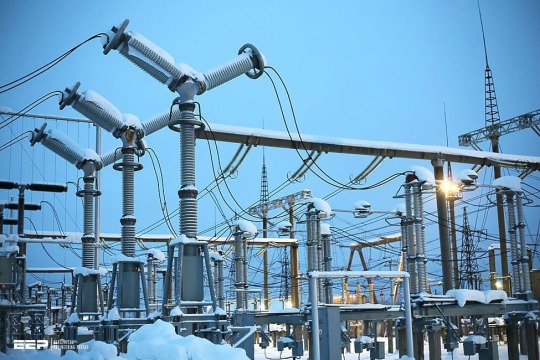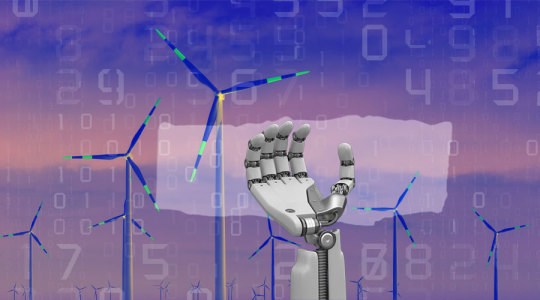#Power distribution
Explore tagged Tumblr posts
Text

#bed time#control system#class war#systems of control#control#domestic#units#power distribution#differentials#hierarchy#social bonds#ausgov#politas#auspol#tasgov#taspol#australia#fuck neoliberals#neoliberal capitalism#anthony albanese#albanese government
0 notes
Text
The global Gas Insulated Switchgear Market Share is expected to grow from estimated USD 24.93 billion in 2024 to USD 33.53 billion by 2029, at a CAGR of 6.1% during the forecast period. This is attributed to the increase in strength across the power distribution infrastructure to meet the high demand for electricity, in addition to increasing investments into renewables and industrial production. In addition, the rapid growth in the deployment of high-voltage direct current (HVDC) systems will further boost market expansion during this period.
#gas insulated switchgear market#gas insulated switchgear#gas insulated switchgear industry#energy#energia#power generation#utilities#power#utility#renewableenergy#renewable power#electricity#renewable resources#gas insulated#switchgears#switchgear#electrical#power transmission#power distribution
1 note
·
View note
Text
Power distribution, Din rail terminal blocks, quick connect, rail mounted
2060 Series 2 Position 24-18 AWG 4 mm Pitch Long Body Pushbutton Terminal Block
0 notes
Text
Learn about the fundamentals and components of electrical substations. This comprehensive guide covers types, functions, and benefits of substations in transmitting and distributing electricity.
0 notes
Text
Explore how electrical engineers drive power generation and distribution, ensuring reliable energy through innovation, system design, and efficient solutions.

1 note
·
View note
Text
Raritan Rack Power Distribution Units (PDUs) 3PH 400V 63A 12XC13 12XC19 IEC60309 43.6KVA 0U @raritan #rack #power #disterbution #unit #3ph #400v #63a #12xc13 #12xc19 #ieb60309 #43kva @univold raraitan
0 notes
Text
Deciphering Your Power Bill: An Overview of Power Distribution Tariffs
Are you perplexed by your power bill? This article breaks down power distribution tariffs and explains how your electricity costs are set. Learn about the things affecting your bill and how you might be able to save money.

0 notes
Text

Laneway
#laneway#my photgraphy#power#power distribution#cityscape#original photographers#urban#skyline#streets#buildings#downtown vancouver#backstreets#streetscene#messywire
0 notes
Text
Tata Power’s New CEO: Gajanan Kale Takes the Helm at TP Western Odisha Distribution Limited!
New Delhi: In a strategic move, TP Western Odisha Distribution Limited has appointed Gajanan S. Kale as its Chief Executive Officer (CEO). The company made this announcement on Monday. Kale officially assumed the role of CEO on April 19. TP Western Odisha Distribution Limited Welcomes Kale Praveer Sinha, Managing Director and CEO of TP Western Odisha Distribution Limited, expressed his warm…

View On WordPress
#CEO Appointment#Electricity Sector#Gajanan Kale#Industry Leadership#Power Distribution#Strategic Move#Tata Power
0 notes
Text
Power Distribution in industrial electrical design
Power distribution in industrial electrical design refers to the effective use of transformers, switchgear, distribution panels, and cables to transport electricity from the source to various pieces of machinery and equipment while maintaining optimal performance, safety, and dependability.
0 notes
Text
Jay Vee Sales & Services is a trusted Power Distribution Equipment Supplier committed to delivering cutting-edge solutions for efficient and reliable electrical distribution systems. With a focus on quality products and personalized service, Jay Vee caters to the diverse needs of industries, offering a comprehensive range of power distribution equipment. From transformers to switchgear, Jay Vee ensures clients receive top-notch products that adhere to industry standards, empowering businesses with the essential infrastructure for seamless and secure power distribution.
1 note
·
View note
Text
The global High Voltage Power Transformer Market in terms of revenue was estimated to be worth $9.1 billion in 2024 and is poised to reach $12.3 billion by 2029, growing at a CAGR of 6.3% from 2024 to 2029 according to a new report by MarketsandMarkets™. This growth is primarily driven by the need to strengthen power distribution networks to keep up with the rising global demand for electricity. Furthermore, the market stands to gain from the increasing capacity of renewable energy sources and substantial investments in industrial production, both of which are expected to boost the demand for High voltage power transformers. Another key factor contributing to this expansion is the growing adoption of high-voltage direct current systems, which is expected to further accelerate market growth during the forecast period.
#high voltage power transformer#high voltage#high voltage power transformer market#power transformer#power transformers#power transmission#energy#energia#power generation#utilities#power#utility#renewableenergy#renewable power#electricity#renewable resources#transformer#transfromers#hv power transformer market#power distribution
0 notes
Text
youtube
#distribution transformer#transformer#electrical transformer#transformers#electrical engineering#power transformer#distribution transformers#electrical transformers#transformer (invention)#electrical transformer explosion#electric transformer#power distribution#core of distribution transformers#electrical distribution#earthing for distribution transformers#distribution transformer in hindi#structure of distribution transformer#electrical distribution system#Youtube
1 note
·
View note
Text
How Electrical Transmission Towers Keep the Power Flowing

The electricity we use every day, from lighting our homes to running industries, depends on Electrical Transmission Line Towers. These structures are key to making sure power gets from plants to homes and businesses without interruptions. Let’s talk about what these towers do, how they work, and why they’re so important.
What Are Electrical Transmission Towers?
Think of Electrical Transmission Towers as the highways for electricity. They’re tall steel structures that carry high-voltage wires over long distances. Their job is to move electricity from power plants to substations, where it gets distributed to homes and businesses. Without these towers, we wouldn’t have the reliable power we depend on every day.
What Makes Up a Transmission Tower?
A transmission tower is made up of several parts, each doing something important:
Tower Body: This is the main structure that holds everything together.
Cross Arms: These are horizontal arms where the wires are attached.
Insulators: These keep the electricity in the wires and stop it from leaking.
Foundation: This keeps the tower steady, even in bad weather.
Grounding System: Protects the tower from lightning by safely directing electricity into the ground.
Accessories: Small parts like dampers and spacers that make the tower work better and last longer.
Types of Electrical Transmission Towers
Different towers are designed for different jobs. Here are some common ones:
Suspension Towers: For straight-line transmission.
Tension Towers: For areas where the line turns or spans long distances.
Transposition Towers: Help balance the electrical load.
Special Towers: Built for tough terrains like mountains.
H-Frame Towers: Simple and cost-effective, often used in rural areas for lower voltage lines.
How Do Transmission Towers Keep Power Flowing?
1. Built to Handle Tough Conditions
These towers are made to stand up to storms, strong winds, and even earthquakes. Thanks to their strong steel design, they rarely fail, helping prevent power outages. Their durability ensures electricity reaches where it’s needed without delays.
2. Keeping Energy Loss Low
By spacing wires properly and using high-quality materials, transmission towers help cut down on energy loss. This means electricity travels efficiently from power plants to your home. Plus, the use of advanced insulation technology ensures that minimal energy is wasted during transmission.
3. Carrying High-Voltage Safely
For electricity to travel long distances, it needs to be at high voltage. These towers make sure the wires stay high above the ground and away from people, keeping everything safe. High voltage ensures the power can cover long distances without significant loss, making the entire system more effective.
4. Supporting Green Energy
Many modern transmission tower manufacturers are focused on making towers more eco-friendly. This includes using recycled materials and designing towers that take up less land.
5. Smarter Grid Systems
Some towers now include tech that can monitor the power grid. This helps catch problems early and makes it easier to fix issues quickly, keeping the power on. Advanced systems can detect faults in real time, helping technicians respond faster and ensuring fewer interruptions in power distribution.
Why Engineering Matters for Transmission Towers
Engineering electrical transmission towers takes careful planning. Engineers look at things like the land, weather, and how much power the tower needs to handle. Each tower is designed with specific requirements to make sure it performs well in its location.
New tools like drones and AI are making this process easier. For example, drones can inspect towers for damage, and AI can predict when maintenance is needed. This technology helps make power grids more reliable and efficient.
Why Choose KP Green Engineering?
When it comes to reliable transmission line tower manufacturers, KP Green Engineering is a name you can trust. We focus on quality, innovation, and sustainability. Our towers are designed to last and are made using eco-friendly materials.
KP Green Engineering also prioritizes efficiency in the manufacturing process, ensuring our towers meet high standards without harming the environment. This commitment to sustainability and innovation has made KP Green Engineering a leader in the field.
Wrapping Up
Electrical transmission towers are essential for getting power to where it’s needed. They’re built to last, reduce energy loss, and even support sustainable practices. These towers make sure electricity reaches homes, businesses, and industries without interruptions.
As our need for electricity grows, companies like KP Green Engineering are leading the way in making sure our power grids are ready for the future. With a focus on advanced technology and eco-friendly practices, KP Green Engineering shaping a more sustainable and reliable energy system.
If you want to learn more or work with experts, you can always contact us.
#electrical transmission tower#transmission line tower#transmission towers#transmission line tower manufacturers#power distribution
0 notes
Text
Revolutionizing the Energy Sector: Artificial Intelligence and Machine Learning by TwoKnct Media & Publishing Ltd

The energy sector stands on the cusp of transformation, driven by technological advancements in artificial intelligence (AI) and machine learning (ML). These disruptive technologies are revolutionizing how energy is produced, distributed, and consumed, ushering in an era of greater efficiency, sustainability, and reliability. From optimizing renewable energy sources to enhancing grid management and predictive maintenance, AI and ML are reshaping the energy landscape.
Optimizing Renewable Energy Sources: Renewable energy sources like solar and wind power are becoming increasingly prevalent in the global energy mix. However, their intermittent nature poses challenges for grid stability and energy management. AI and ML algorithms offer solutions by predicting renewable energy generation patterns, optimizing power output, and integrating renewable sources seamlessly into existing grids.
ML algorithms analyze historical data, weather patterns, and other variables to forecast renewable energy generation with remarkable accuracy. These forecasts enable grid operators to anticipate fluctuations in supply and demand, facilitating better resource allocation and grid balancing. Moreover, AI-driven optimization algorithms can dynamically adjust parameters such as turbine angles or solar panel orientations to maximize energy yield based on real-time conditions.
Enhancing Grid Management: Maintaining a stable and resilient energy grid is crucial for ensuring uninterrupted power supply to consumers. AI and ML play a vital role in enhancing grid management by offering predictive analytics, real-time monitoring, and intelligent automation.
Predictive analytics algorithms leverage historical data and machine learning models to identify potential grid failures or bottlenecks before they occur. By analyzing data from sensors, smart meters, and IoT devices, these algorithms can anticipate equipment failures, predict demand patterns, and optimize energy distribution routes. This proactive approach minimizes downtime, reduces maintenance costs, and enhances overall grid reliability.
Real-time monitoring systems equipped with AI algorithms continuously analyze grid data to detect anomalies, identify inefficiencies, and optimize energy flow in response to changing conditions. These systems enable grid operators to make informed decisions swiftly, mitigating risks and improving grid performance.
Intelligent automation powered by AI algorithms streamlines grid operations by autonomously adjusting energy flows, rerouting power, and optimizing load distribution. By incorporating advanced control systems and decision-making algorithms, energy grids can operate more efficiently, adapt to fluctuations in supply and demand, and integrate renewable energy sources seamlessly.
Predictive Maintenance: Maintaining energy infrastructure is essential for ensuring safety, reliability, and longevity. Traditional maintenance practices often rely on scheduled inspections or reactive repairs, leading to inefficiencies and downtime. AI and ML-based predictive maintenance techniques offer a proactive approach by analyzing sensor data, equipment performance metrics, and historical maintenance records to forecast equipment failures and prioritize maintenance activities.
Machine learning algorithms trained on vast amounts of sensor data can identify patterns indicative of impending equipment failures, such as abnormal vibrations, temperature variations, or voltage fluctuations. By continuously monitoring equipment health in real-time, these algorithms can predict potential failures with high accuracy, allowing operators to intervene preemptively and schedule maintenance activities during planned downtime.
Furthermore, AI-driven predictive maintenance systems optimize maintenance schedules, spare parts inventory, and resource allocation, reducing operational costs and minimizing downtime. By prioritizing critical maintenance tasks based on risk assessments and performance analytics, energy companies can enhance asset reliability, extend equipment lifespan, and improve overall operational efficiency.
Conclusion: Artificial intelligence and machine learning technologies are reshaping the energy sector, driving innovation, and unlocking new opportunities for efficiency, sustainability, and resilience. From optimizing renewable energy sources to enhancing grid management and predictive maintenance, AI and ML are enabling energy companies to overcome challenges, improve operational performance, and deliver reliable, affordable, and sustainable energy solutions for the future. Embracing these transformative technologies is essential for staying competitive in an increasingly dynamic and interconnected energy landscape.
#artificial intelligence#renewableenergy#solar energy#power distribution#machine learning#conference#ai#valencia#oilandgas#energy#visit
0 notes
Text
Norms, Power, and the Western Delusions of Benevolence
Dive into a compelling critique of Western self-perception as benevolent powers in this insightful blog post. Uncover the complexities of cultural norms, political orders, and the often overlooked role of power in shaping these norms. #Norms #Power #West
Cultural norms shape the emergence and evolution of political orders. However, these norms are not static or homogeneous, but rather dynamic and diverse, reflecting the power relations among different actors in local and global contexts. Huntington (1996) argued that the clash of civilizations, or the cultural conflict between different regions and groups, is the main source of global instability…

View On WordPress
#Clash of Civilizations#Colonianlism#Cultural Identities#Cultural Norms#De Tocqueville#Elites#Global Elites#Global Instability#Human Societies#Huntington#International Norms#Political Orders#Political Outcomes#Post-Cold War Era#Power#Power Distribution#Power Relations#Rules-based Order
0 notes